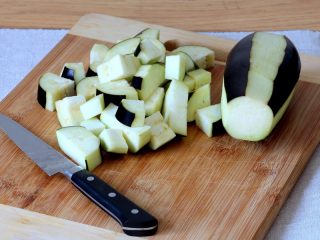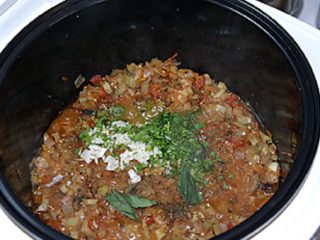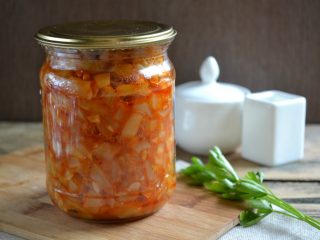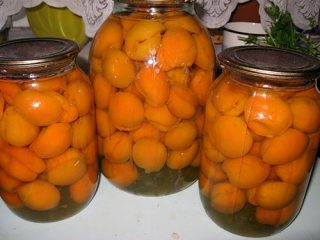Content
You can pickle parsley for the winter in glass jars or hermetically sealed containers made from food-grade plastic. The greens are processed dry, simply mixed or sprinkled with salt. The raw materials can be cut and filled with brine. With any type of preservation, most of the nutrients, as well as the aroma of the herb, will remain throughout the winter.
Is it possible to salt parsley for the winter?
More often, greens are harvested dried or frozen. These processing methods have their pros and cons. Dried parsley loses its aroma and some of its beneficial components. It will take a lot of time to prepare it. Freezing is a more convenient method if there are not many greens and there is room in the freezer.
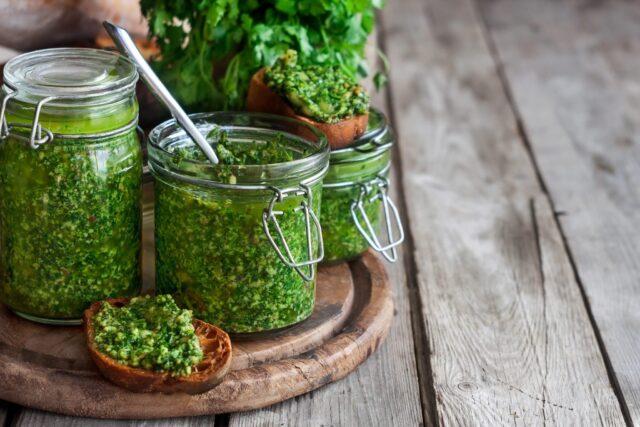
It is better to pickle a large amount of parsley in jars for the winter
Greens are stored well in glass containers. The recipes do not require heat treatment, and salt acts as a preservative.
You can use canned parsley in preparing first and second courses. It is necessary to take into account that salt is used to store greens, so the taste of the dish is adjusted only after adding greens.
The benefits and harms of salted parsley
Parsley canned for the winter contains many useful components. The chemical composition of the herb includes:
- vitamins of group B, E PP;
- beta-carotenes;
- folic (B9) and ascorbic acid (C);
- phylloquinone (K);
- apigenin (bioflavonoid compound).
The preparation for the winter contains:
- zinc;
- sodium;
- potassium;
- phosphorus;
- calcium;
- copper;
- magnesium.
Beneficial properties of salted parsley:
- Participates in hematopoiesis, normalizes the number of red blood cells, improves coagulation, and prevents the development of anemia.
- Promotes brain function, increases communication between neurons.
- Improves lipid metabolism, normalizes liver function.
- It has diuretic properties and reduces swelling.
- Strengthens gums, whitens tooth enamel.
- Acts as a strong antioxidant. Prevents the development of atherosclerosis, strengthens blood vessels, and relieves inflammatory processes.
- Calms and restores the nervous system, improves sleep quality.
- Normalizes fat metabolism in tissues, parsley is useful for weight loss.
- Normalizes hormonal levels in women, participates in the production of testosterone in men.
- Improves the functioning of the digestive system, removes toxins.
The herb is indicated for the treatment of:
- prostatitis;
- muscle spasms;
- obesity;
- gastrointestinal diseases;
- depression;
- atherosclerosis;
- allergies.
Parsley and salt can only be harmful if consumed excessively. Use with caution in the following conditions:
- exacerbation of cystitis;
- urolithiasis disease;
- nephritis;
- high blood clotting;
- allergic reaction to parsley;
- anorexia.
It is not recommended to use parsley during pregnancy, as it may cause contraction of the uterine walls.
Selection and preparation of parsley for harvesting
To pickle greens for the winter, use young parsley of good quality, juicy, without dry or yellow leaves. Cut, retreating from the base of the bush, approximately 10–15 cm.
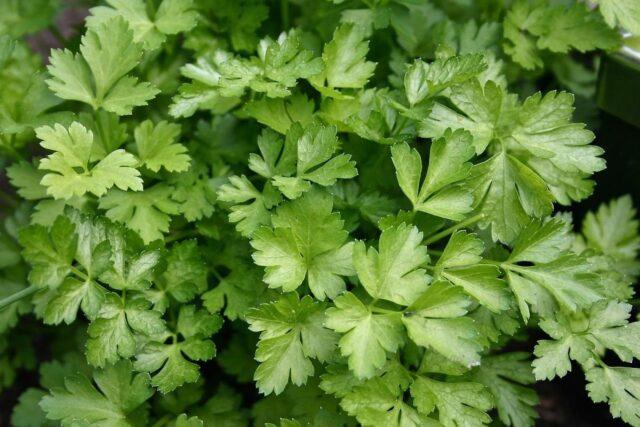
Greens are taken for canning at the beginning of summer, i.e. before the flowering phase and the formation of hard stems
How to prepare raw materials for processing:
- The workpiece is sorted, dry or yellow leaves, possible grass or small debris are removed.
- Make a weak saline solution into which the greens are immersed for 10–15 minutes. This is necessary to get rid of small insects.
- Take out and wash under running water.
- The raw materials are laid out on a fabric kitchen towel. It is necessary that the moisture evaporates completely.
- Collected in small bunches, convenient in size for cutting.
- Remove the tough part of the stems.
- Cut into small pieces.
How to pickle parsley in jars for the winter
You can prepare parsley and salt for the winter in jars of any size, but it is better to use small ones. In this case, the workpiece will be well salted. Some recipes do not provide for sterilization of preservation containers. But jars and lids should be disinfected to prevent mold from forming. To heat glass containers, you can use a microwave or oven. As a last resort, the jars can be doused with boiling water and dried.
Recipe for salted parsley for the winter using the dry method
Recipes recommend a 5:1 proportion of parsley and salt, i.e., for about 500 g of herb you will need 100 g. To prevent the greens from being over-salted, 2 tbsp is enough. l.
Recipe for parsley and salt for the winter using the dry method:
- The prepared raw materials are placed in a mixing container; it is better to take a plastic or glass bowl.
- Processed in small batches, approximately 1 kg each.
- Salt is added to the raw materials and they begin to mix according to the principle of kneading dough.
- After a while the juice will appear.
- The mass is placed in dry, treated jars, each layer is well compacted, you can use a spoon or rolling pin, if you don’t do this, the greens will settle and the container will become half empty.
You can close it with metal or nylon lids. In the second case, clean gauze is placed on the surface of the workpiece, a layer of salt is added, and it is closed.
You can prepare the grass in a container:
- The bottom is covered with salt.
- Lay out the raw materials in layers. Each row is sprinkled with salt.
- Fill to the top. The final layer is salt. The containers are closed.
- Place in the refrigerator.
Use the herb for this recipe first. Shelf life - no more than four months.
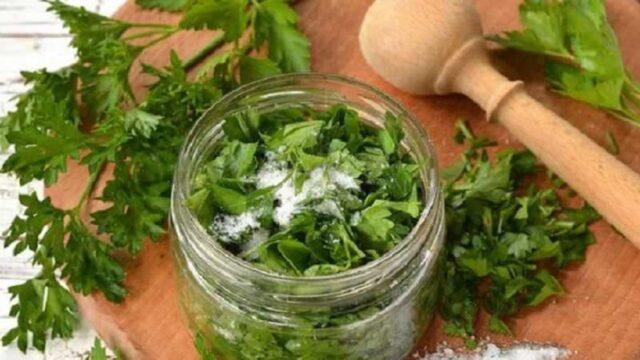
Store the workpiece at a temperature of +4 0C in the basement, pantry or refrigerator
Recipe for pickling parsley for the winter with brine
Parsley after processing can be chopped or used sprigs with the hard parts of the stem removed. The brine is prepared at the rate of 2 tbsp. l. salt per 2 liters of water.
Process sequence:
- Sterilized jars are tightly filled with raw materials.
- Put water on the fire and prepare the brine.
- Boiling liquid is poured into containers.
- Sealed with metal lids.
The jars are turned over to make sure they are closed tightly and covered with a warm blanket or blanket.
Greens with brine can be prepared in the following way:
- Jars (0.5 l) are tightly filled with chopped raw materials, leaving approximately 5 mm to the top.
- Pour in ½ tbsp. l. salt and pour boiling water to the top.
- Place a kitchen towel on the bottom of the pan, place jars and cover with lids.
- Pour water into the container so that it reaches the hanger of the container.
- Sterilize for 2–3 minutes.
Seal and invert onto lids.
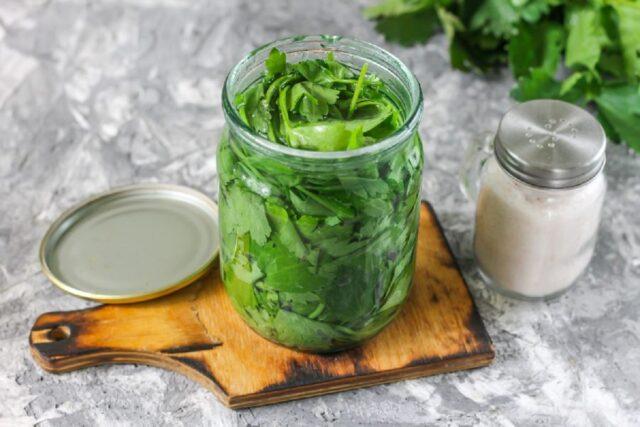
Harvesting for the winter after sterilization retains its nutritional value for 9–10 months
Conclusion
There is a quick way to pickle parsley for the winter: sprinkle it with salt or pour it with brine. The shelf life of the product can be extended if the jars of herbs are sterilized. Canned parsley is used as a seasoning for first and second courses. It gives not only a pleasant taste, but also a fresh aroma of greenery.


